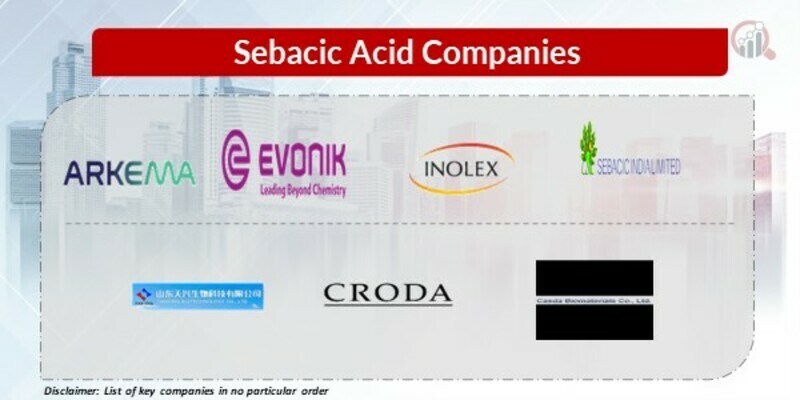 Sebacic acid, a versatile dicarboxylic acid, is experiencing a surge in popularity due to its sustainable and bio-based nature. This has ignited a fierce competition within the market, with players vying for dominance in this promising sector. Let's delve into the strategies adopted, factors influencing market share, recent industry news, and the current landscape of this dynamic market.
Sebacic acid, a versatile dicarboxylic acid, is experiencing a surge in popularity due to its sustainable and bio-based nature. This has ignited a fierce competition within the market, with players vying for dominance in this promising sector. Let's delve into the strategies adopted, factors influencing market share, recent industry news, and the current landscape of this dynamic market.
Strategies Adopted by Major Players:
-
Focus on Sustainability: Leading companies like BASF, Evonik, and DSM are actively investing in bio-based sebacic acid production processes, leveraging castor oil and other renewable feedstocks. This caters to the growing demand for eco-friendly materials and strengthens their brand image.
-
Technological Innovation: Continuous research and development efforts are aimed at improving production efficiency, reducing costs, and exploring new applications for sebacic acid. This includes advancements in bio-based synthesis, catalyst development, and polymer modification techniques.
-
Vertical Integration: Integrating backward into castor oil production or forward into downstream applications like polyesters and plasticizers gives companies greater control over the supply chain and profitability.
-
Strategic Partnerships and Acquisitions: Collaborating with research institutions, academic partners, and downstream players allows companies to access new technologies, expertise, and market reach. Recent examples include Evonik's partnership with Novozymes for enzymatic sebacic acid production and BASF's acquisition of Sekisui Chemical's nylon business.
-
Focus on Regional Markets: Expanding into emerging economies like China, India, and Brazil with high growth potential in application areas like textiles and automotive is crucial for market share expansion.
Factors Influencing Market Share:
-
Production Capacity and Cost Competitiveness: Companies with larger production capacities and cost-effective processes hold an edge in the market.
-
Product Portfolio and Application Diversification: Offering a wider range of sebacic acid derivatives and exploring new applications in sectors like cosmetics, pharmaceuticals, and food additives broadens market reach and reduces dependence on specific segments.
-
Brand Reputation and Sustainability Credentials: A strong brand image and commitment to sustainable practices attract environmentally conscious customers and investors.
-
Regulatory Landscape and Government Support: Supportive policies and incentives for bio-based chemicals by governments can significantly boost demand and market growth.
Key Companies in the Sebacic Acid market include
- Akrema Group (France)
- EVONIK (Germany)
- HOKOKU KOGYO Co. Ltd (Japan)
- Casda biomaterials co. Ltd (China)
- Sebacic India Limited (India)
- Tianxing Biotechnology Co., Ltd. (China)
- Shanxi Zhengang Chemical Co., Ltd. (China)
- Croda International Plc (U.K)
- Inolex incorporation (U.S.).
Recent Developments:
-
December 2023: DSM announces plans to invest €100 million in expanding its sebacic acid production capacity in the Netherlands, aiming to meet the increasing demand for bio-based nylon.
-
January 2024: BASF and Mitsubishi Chemical Corporation form a joint venture to develop and commercialize bio-based plasticizers derived from sebacic acid, targeting the automotive and construction industries.
-
February 2024: A new study published in Nature Sustainability highlights the potential of sebacic acid in replacing fossil-based chemicals in various applications, further solidifying its role in the circular economy.





 Sebacic acid, a versatile dicarboxylic acid, is experiencing a surge in popularity due to its sustainable and bio-based nature. This has ignited a fierce competition within the market, with players vying for dominance in this promising sector. Let's delve into the strategies adopted, factors influencing market share, recent industry news, and the current landscape of this dynamic market.
Sebacic acid, a versatile dicarboxylic acid, is experiencing a surge in popularity due to its sustainable and bio-based nature. This has ignited a fierce competition within the market, with players vying for dominance in this promising sector. Let's delve into the strategies adopted, factors influencing market share, recent industry news, and the current landscape of this dynamic market.

















